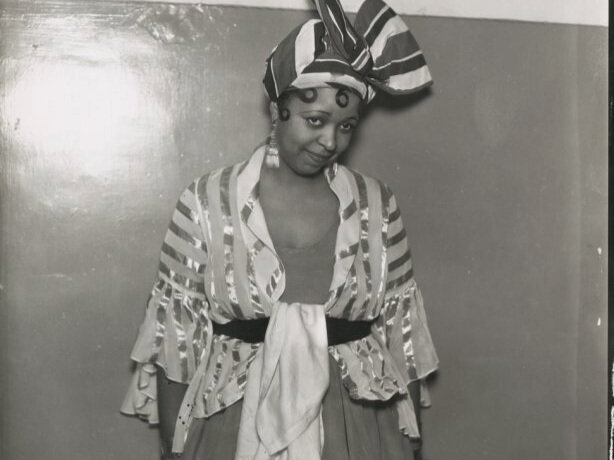Ethel Waters meets Fletcher Henderson
The seventh 1921 post for our annual celebration of Black History Month.
One hundred years ago today … or at least, sometime in February 1921, singer Ethel Waters walked into Harry Pace Phonograph Company at 2289 7th Avenue (at 45th Street) and met Fletcher Henderson, the not-yet jazz pianist who had recently been hired by Pace as the company’s musical director (Lewis 173).
Billy Rose Theatre Division, The New York Public Library. "Ethel Waters" The New York Public Library Digital Collections. (No date.)
It would be a momentous meeting in a momentous 1921 for both of these Harlem Renaissance icons; we will be featuring them again.
Waters was in the early stages of a career that would see success on stage, on record, and on screen; Waters became iconic as a tacitly acknowledged lesbian and a supporter of queer culture in her Harlem salon.
Originally from Pennsylvania, began her singing career at the Lincoln Theater in Baltimore at the age of 17. In 1919, 23 years old, she moved to Harlem. She found a small role in a musical at the Lafayette, Hello 1919, which garnered her praise in the Age from Lester A. Walton. “Waters… makes a favorable impression as a comedienne. She also knows how to render a song effectively.”
Sometime after her NYC arrival–we have not yet been able to identify when–Waters began singing at Edmond’s Cellar. In 1927, Rudolph Fisher would recall the scene:
There was Edmonds' in Fifth avenue at 130th street. It was a sure-enough honky-tonk, occupying the cellar of a saloon. It was the social center of what was then, and still is, Negro Harlem's kitchen. Here a tall brown-skin girl, unmistakably the one guaranteed in the song to make a preacher lay his Bible down, used to sing and dance her own peculiar numbers, vesting them with her own originality. She was known simply as Ethel, and was a genuine draw-ing-card. . . . She would stride with great leisure and self-assurance to the cen-ter of the floor, stand there with a half-contemptuous nonchalance, and wait. All would become silent at once. Then she'd begin her song, genuine blues, which, for all their humorous lines, emanated tragedy and heartbreak:
Woke up this mawnin'
The day was dawnin'
And I was sad and blue, so blue, Lord—
Didn' have nobody To tell my troubles to
(183)
According to David Levering Lewis, Waters had observed the success of Mamie Smith’s blues recordings for Okeh Records and was hoping the Harry Pace Phonograph Company would give her a chance at something similar.
Schomburg Center for Research in Black Culture, Photographs and Prints Division, The New York Public Library. "Fletcher Henderson, bandleader" The New York Public Library Digital Collections. 1926.
Pace had just started the company after dissolving his music publishing firm with W.C. Handy (about which see our post of August 14th, 1920) to form a recording company. Soon he would create the company’s imprimatur Black Swan Records, which would become one of the most important record labels in US history; we will be posting about it on March 4th, 1921, and most certainly again later.
Henderson was a new arrival in NYC, having graduated from Atlanta University in 1920 and then moved to the city to pursue a Masters in Chemistry at Columbia University. But he changed course, working for Handy and Pace, demonstrating songs to visiting potential clients. Pace brought him along to the new company in early 1921. Henderson would become a pivotal figure in the history of jazz; from 1924 he led an orchestra at Roseland Ballroom, in front of integrated audiences, that did much to innovate in the genre.
Classically trained, he had never, until 1920, played music that might fall under the categories blues, ragtime, or jazz. That would change after his 1921 hiring by Pace and meeting with Waters.
References/Further reading:
Fisher, Rudolph (2008). The City of Refuge: The Collected Stories of Rudolph Fisher. University of Missouri Press.
Lewis, David L. When Harlem was in vogue. United Kingdom, Penguin Books, 1997.
Walton, Lester A. “Hello 1919: An Up-to-Date-Musical Attraction,” New York Age, 18 October 1919, p. 6.
– Jonathan Goldman, February 15, 2021
TAGS: jazz, blues, African American music, Black business, lgbtq history, entertainment, criticism, clubs, cabarets

